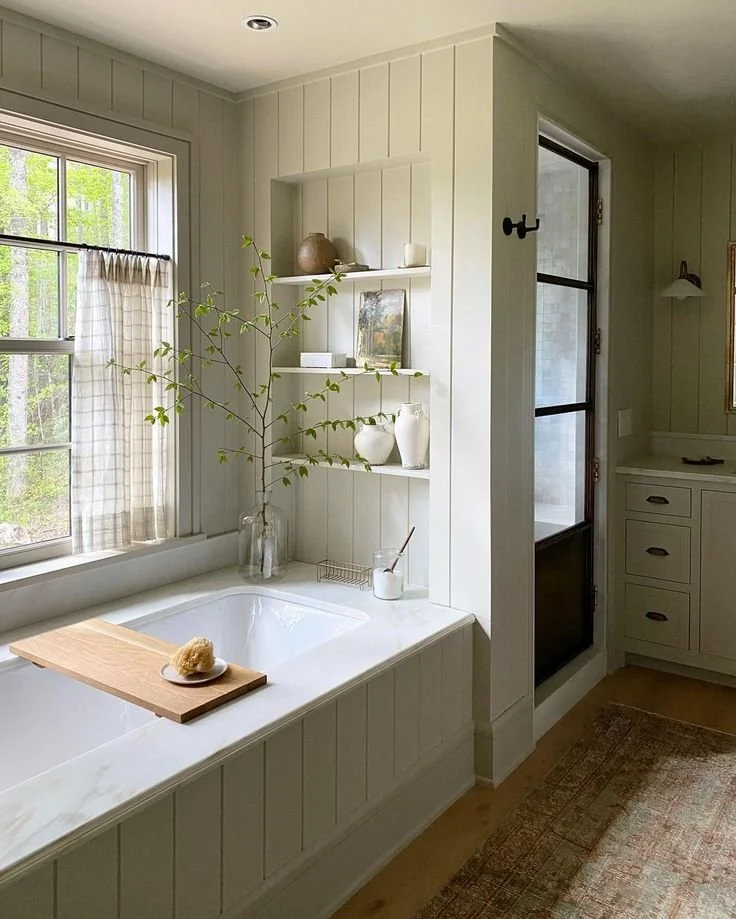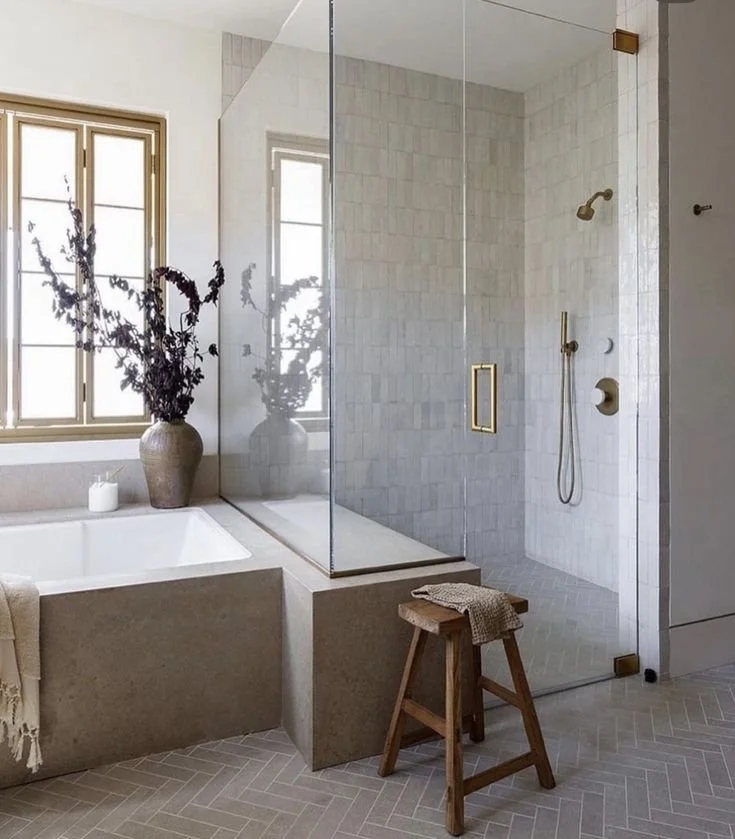EXCLUSIVE CONTENT
Complimentary Content and Design Support for Instagram Followers!
YOUR DESIGNER
Paige Gray, BA ID
Why Choose a Built-In Tub?
The Benefits of Built-In vs. Freestanding Tubs
Built-in tubs are a classic choice for bathrooms due to their functionality, longevity, and versatility. Here's why they might be the right choice for your layout:
Easy to Clean: Built-in tubs have a streamlined design that makes them easier to clean than some freestanding tubs, especially if they are incorporated with a tile or acrylic surround. The lack of external legs or seams reduces the areas where grime and water can accumulate, ensuring minimal maintenance.
Ergonomically Designed: Built-in tubs are often part of a larger design that takes into account human ergonomics. These tubs tend to be designed for comfort, with built-in backrests, armrests, and sloped angles that encourage relaxation. You can often find models with features such as built-in ledges for toiletries or integrated seating.
Space Efficiency: Built-in tubs often maximize the available space in your bathroom. By being integrated into the surrounding walls or cabinetry, they offer a clean, seamless design that makes the room feel more cohesive and organized. For smaller bathrooms, this can be a great way to preserve space while still including a luxurious soaking tub.
Best Placement for a Built-In Tub: Layout Considerations
Built-in tubs can be incorporated into a variety of bathroom layouts, but their placement is key to creating both functional and visually appealing designs.
Against a Wall:
The most common configuration for built-in tubs is against a wall or in a corner. This layout works well for smaller bathrooms, as it saves space while still allowing the tub to serve as a relaxing focal point. A tiled surround or custom cabinetry can be used to frame the tub, providing additional storage or styling opportunities.Under a Window:
If space allows, placing a built-in tub under a window creates a spa-like ambiance. You can enjoy natural light and outdoor views while soaking, which is ideal for larger bathrooms.Freestanding Surround or Alcove:
In larger bathrooms, you can opt for a freestanding alcove style, where the built-in tub is surrounded by a partial wall, offering easy access from three sides. This is especially ideal for those who want a tub that feels more open while still having the built-in benefits.
Walk-In Showers: The Perfect Complement to Built-In Tubs
Walk-in showers have become a highly desirable feature in modern bathrooms due to their sleek, spa-like feel and ease of use. Here’s why they work well with built-in tubs:
Space Efficiency: Walk-in showers often require less floor space than traditional showers with doors. You can have an expansive, open-concept feel, which works well with a built-in tub that has a tiled surround or is surrounded by cabinetry.
Seamless Flow: A walk-in shower, especially one with frameless glass panels, provides a seamless look when combined with a built-in tub. The open nature of the shower complements the built-in design, making the space feel larger and more fluid.
Design Flexibility: Walk-in showers can be tailored to fit with your tub’s design. For example, sloping floors in the shower that drain towards a linear drain can flow into the rest of the bathroom without disrupting the design integrity.
Considerations for the Shower:
A built-in bench inside the shower is a practical addition, allowing for a relaxing space to sit and relax while showering.
A niche for toiletries is essential for keeping the shower area organized, especially if you are working with a more minimal or clean design.




